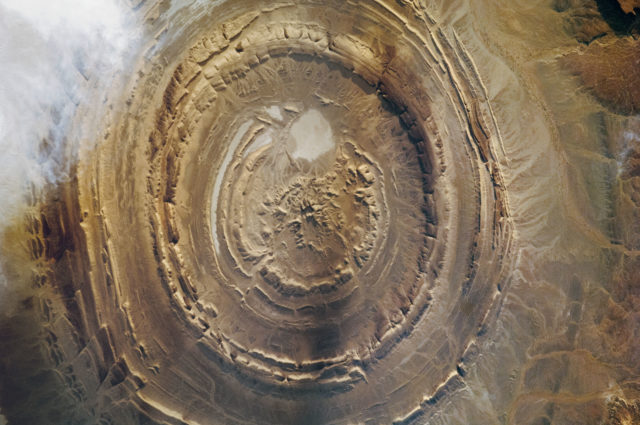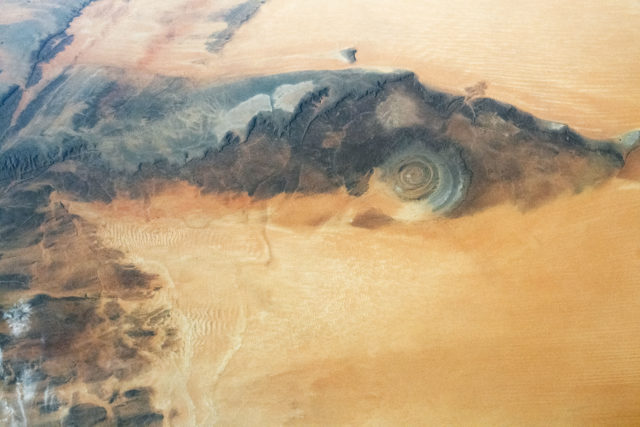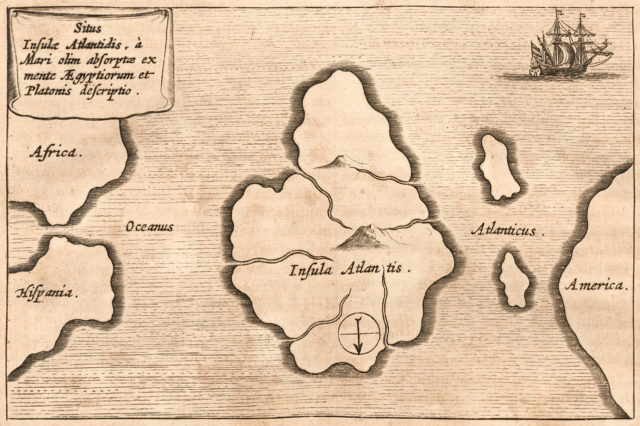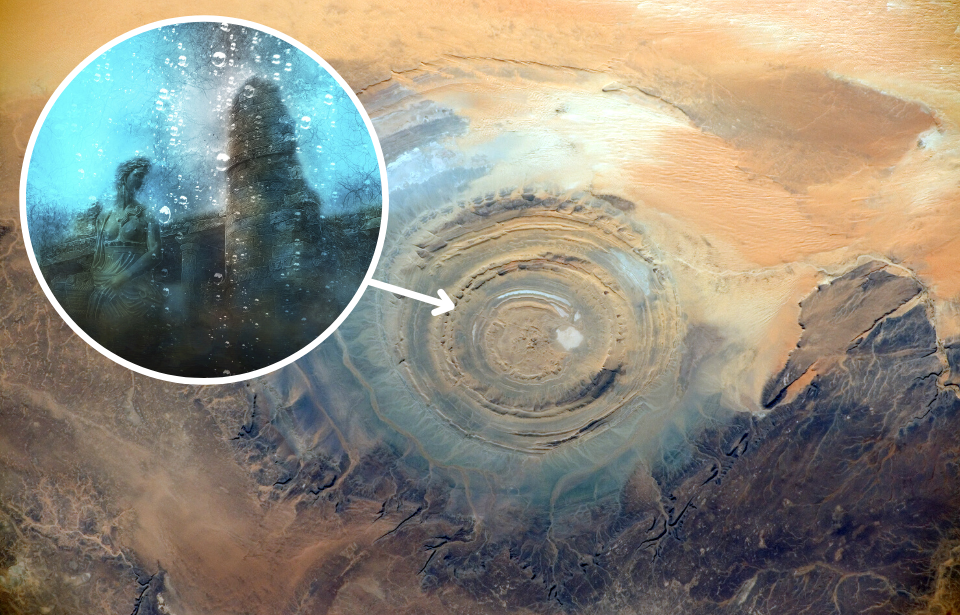Geologists have been fascinated by the Richat Structure – also known as the “Eye of the Sahara” – for decades. Entirely naturally occurring, the alien-like structure formed millions of years ago. However, some believe the Eye’s significance extends far beyond rocks and minerals, potentially revealing the location of the long-lost city of Atlantis.
What is the Richat Structure?

Stretching 25 miles across, the Richat Structure is a deeply eroded, dome-shaped formation made from sedimentary rock that dates back to the Late Proterozoic era, some 2500-538.8 million years ago. Located in the African country of Mauritania, the structure was formed by volcanic activity beneath the Earth’s surface, lifting the landscape around the Eye, which consisted of lakes and rivers before it became the Sahara Desert.
Over time, sandstone deposits along the bottom of these waterways were pushed upward by the volcanic flow, creating layers like an onion. As the Eye was formed by these layers of sedimentary rocks, a geological record was created that researchers have since used to date the structure.
The oldest rocks date back to when the supercontinent Pangaea began to pull apart, creating the world map as we know it today. When Pangaea moved apart, the land rose underneath the structure as magma from the Earth’s interior rose up to the surface, surrounding the sandstone layers in a dome-like shape.
As the volcanic activity died down, wind and water erosion slowly began to reveal the rounded sandstone layer. This created the Eye’s shape, which dips down just below the level of the surrounding desert landscape.
Eye of Africa

The Richat Structure is actually fairly unimpressive from the ground, but ever since humans first ventured into space it’s become a favorite attraction of astronauts. The Eye is so large it can be seen from space, providing astronauts with a landmark that allows them to locate exactly where they are in relation to the Earth’s orbit.
Originally thought to be created by a meteor, or even by the landing of a flying saucer, the Eye has captivated the imagination of people around the world who are mystified by its unique shape. The mountainous regions that surround the structure also add to its eye-like shape, making it look like an iris nestled in the middle of a giant human eye.
Have we found the lost city of Atlantis?

One story suggests that the Eye could be the former site of the lost city of Atlantis, a fictional island first mentioned in the works of the Greek philosopher Plato. Around 360 BCE, he wrote about the magnificent city, a utopian society that attacked “Ancient Athens” before ultimately displeasing the deities and sinking into the Atlantic Ocean.
According to some who believe the Richat Structure is the site of the lost city, several points have been argued to back up their theory. Per Plato, Atlantis was destroyed 116,000 years ago, which matches up with the Younger Dryas period, when sea levels fluctuated and fire devastated entire civilizations – just like Plato described.
Plato also described Atlantis as having a central island that was surrounded by different rings – including those made of water – remarkably similar to the Richat Structure. Researchers even believe that large amounts of water once drained out of the Richat Structure, suggesting it could have been surrounded by water at one time, just like Atlantis.
Finally, the Richat Structure is “in the shadow of mountains to the north, through which rivers flowed down into a wide valley” – the same landscape in which Atlantis was supposedly situated.
Can you visit the Richat Structure?

Many scientists have dismissed these claims and even debunked some of the citizen science behind them, meaning Atlantis hasn’t been discovered – at least, not yet.
A lot is still unknown about the mysterious structure, and experts continue to research its geology and archeology, in the hopes of better understanding its origins. For those wanting to see the structure for themselves, you can visit it as a tourist destination and even stay at a hotel inside the Eye!
More from us: Climate Change and Modern Conveniences Are Causing This Tunisian Cave Village to Empty
Climate change has been creating more intense desert winds, which threaten to completely cover this natural marvel in the sand. Make sure to see the Eye of the Desert before it’s swallowed up!
